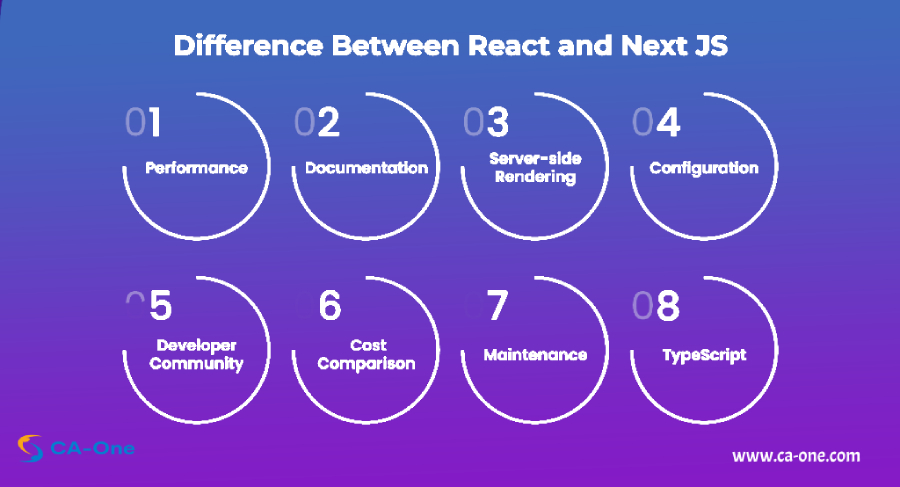
In the ever-evolving landscape of front-end development, the choice between React and Next.js holds significant importance in 2024. As developers strive to create modern and performant user interfaces, understanding the strengths and considerations of each framework becomes crucial.
Understanding React
React Overview
React, a powerful JavaScript library, continues to be a cornerstone of front-end development. Its flexibility and extensive ecosystem make it a popular choice for building user interfaces.
Key Features
React’s strengths lie in its simplicity, flexibility, and a vast array of libraries and tools. As of 2024, React remains a robust foundation for various projects.
Exploring Next.js
Introduction to Next.js
Next.js, built on top of React, extends its capabilities by providing features like server-side rendering (SSR) and static site generation (SSG). These features aim to enhance performance and user experience.
Advantages of Next.js
Next.js offers advantages such as automatic routing, SSR, and SSG, making it an attractive choice for complex projects. The framework has a thriving community and inherits the strengths of React.

Key Considerations for Choosing Between React and Next.js
1. Project Complexity
- React : Ideal for simpler projects where control over configuration is essential.
- Next.js : Suited for more complex projects, leveraging features like SSR and SSG for improved performance.
2. Server-Side Rendering (SSR) vs. Static Site Generation (SSG)
- React : Requires additional configuration for SSR.
- Next.js : Excels in SSR and offers SSG for scenarios where pre-rendered content is advantageous.
3. Routing
- React : Requires additional libraries or custom configurations.
- Next.js : Provides automatic routing for streamlined navigation.
4. Community and Ecosystem
- React : Boasts a massive and active community with an extensive ecosystem.
- Next.js : Inherits React’s ecosystem and has its own active community.
5. Learning Curve
- React : Easier for beginners due to its library nature.
- Next.js : Introduces additional concepts, potentially having a steeper learning curve.
6. Flexibility
- React : Offers more flexibility for fine-tuning.
- Next.js : Provides conventions and built-in features, potentially limiting flexibility in certain cases.
Performance and SEO Considerations
Server-Side Rendering (SSR) in Next.js
- Enhances performance by rendering pages on the server.
- Provides SEO benefits through server-side rendering.
Static Site Generation (SSG) in Next.js
- Suitable for scenarios with content that doesn’t change frequently.
- Offers performance advantages by pre-rendering pages at build time.
Front-End Development Trends in 2024
As of 2024, front-end development trends continue to shape the way applications are built. React and Next.js align with these trends, providing developers with tools to create modern and efficient user interfaces.
Read more about:
Unveiling the Art of eCommerce Site Development
The Benefits of Recruiting Services for Your Hiring Needs
Mastering Frontend Development: A Comprehensive Guide
Conclusion
In conclusion, the choice between React and Next.js depends on the specific requirements of your project. React remains a reliable choice for simpler applications, while Next.js shines in more complex scenarios, offering features like SSR and SSG for enhanced performance. Consider the project’s complexity, desired features, and the learning curve to make an informed decision in 2024.


